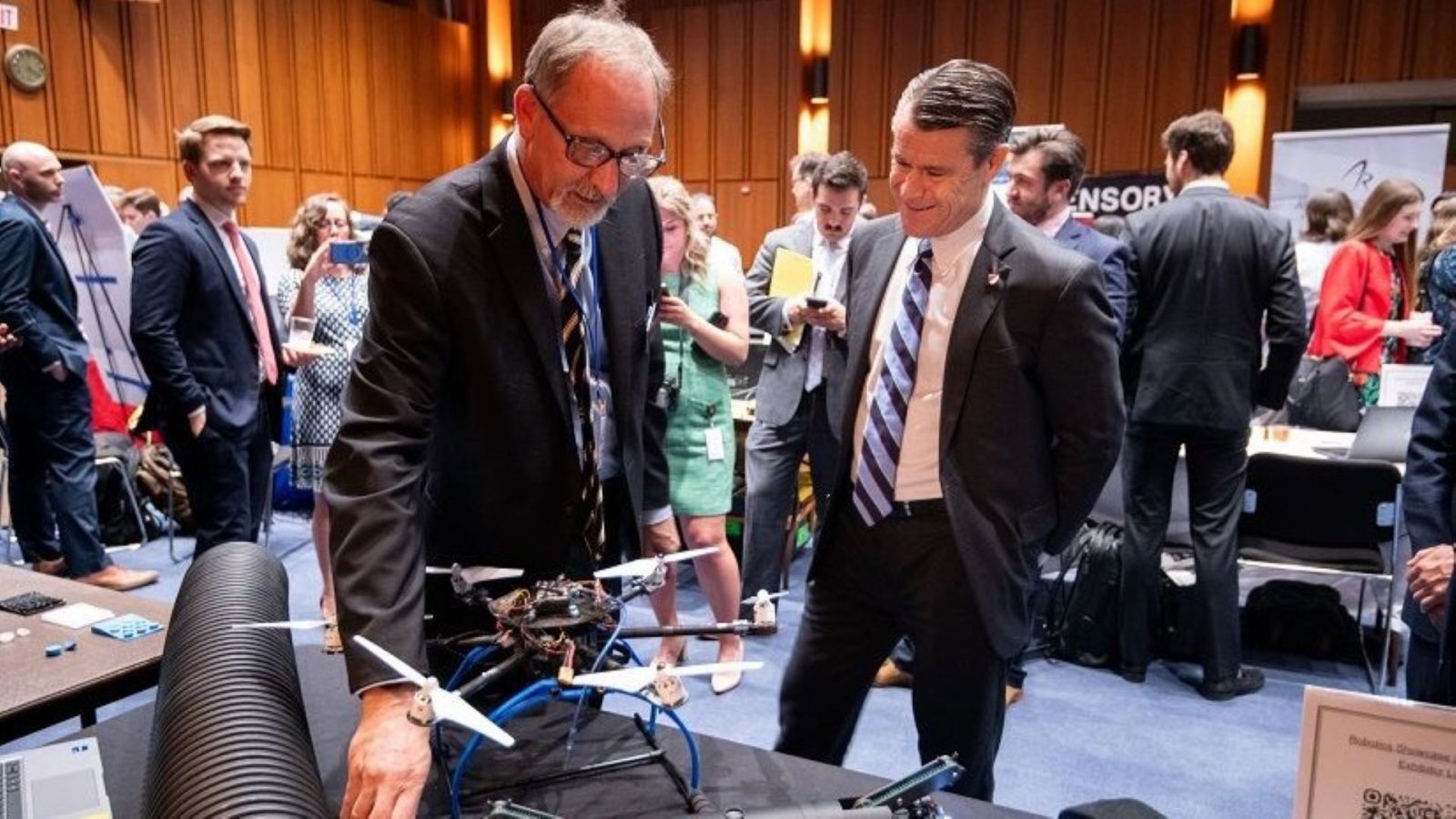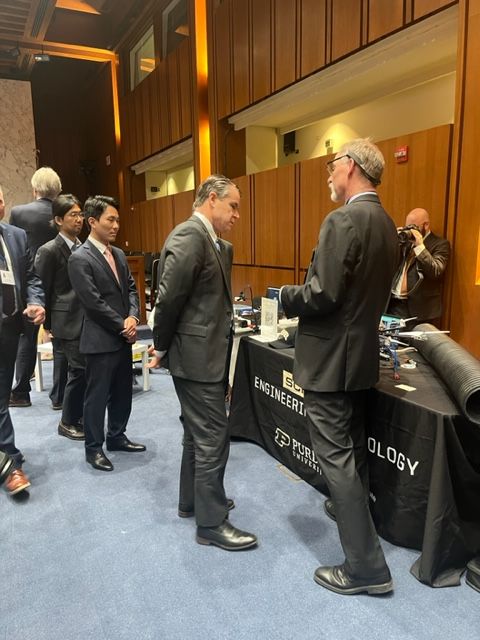
Before summer 2024, Richard Voyles from the School of Engineering Technology joined several colleagues spread across engineering and the Polytechnic to showcase robotics technology to the U.S. Senate.
Voyles, Purdue Polytechnic’s Daniel C. Lewis professor and the director of the Robotics Accelerator center, was accompanied to Washington, D.C. by Ragu Athinarayanan (engineering technology professor and an architect of Purdue Polytechnic’s new Smart Manufacturing curriculum) and the College of Engineering’s Martin Jun (a mechanical engineering professor with interests in micro- and nano-technology).
“I think the people in D.C. actually reached out to us about this originally,” Voyles said. “They invited us specifically because [senior senator from Indiana] Todd Young is one of the co-sponsors of this caucus. And this is a great sign, because we haven’t really had some who’s been as much of an advocate for tech in higher education than him.”
The Senate AI Caucus was created in early 2019 but both membership and the quantity of activity coming from the group has expanded since last year.

“I think they’re sensing that there’s been a sudden rise in the quality of outcomes that certain types of AI can produce, and so obviously more policy ideas and more concerns about regulations and guardrails come along with that,” Voyles stated.
Between the sudden public interest in AI since 2022, combined with lingering concerns about the global political implications of this technology (e.g., what Russia and the People’s Republic of China may be able to accomplish with such tools), the Caucus has spun up its activities to a greater degree.
The Senate also intends for the Caucus to be big-tent, which is partly why experts from adjacent fields such as robotics were invited. Voyles stated that many of the same individuals from the former Senate Robotics Caucus were also in attendance: “I suspect that part of the government’s goal is to reinvigorate some of these other technology orgs, like the Robotics Caucus, that haven’t really met since COVID. Then we can all be in one place to address concerns about the big to-dos in technology, like AI.”
The professors were also joined by a number of students, and together showcased a variety of robot mechanisms and applications. This included in-vivo animal agriculture, human medical robotics, emergency response robotics, and 4D Printing of entire robots including sensing, computation and even software. They also demoed miniature robots for subterranean investigation of the soil microbiome, and for penetrating into the rubble of a collapsed structure for urban search and rescue. Jun and Athinarayanan also provided a relevant demo and information about the Smart Manufacturing program.
Voyles explained that the Senate’s interest in robotics began with their investigations into their effects on the job market—which have been especially relevant to senators such as Todd Young who hail from “corn belt” and other agricultural states (agriculture has proven to be especially amenable to robotics and automation).
“In the 80s and 90s, robots were a threat to jobs. We were all talking about it being ‘lights out for factories.’ And because that never fully materialized, we started to have labor unions actually supporting robotics for the first time. And so more recently, say in the 2010s, labor unions got on board because they saw how these robots were less of a threat than they were a benefit.
“The biggest issue for unions is the risk of disability to their members. They started to see robotics as a way to offload some of the more dangerous, repetitive jobs that don’t just lead to catastrophic accidents, but even something like a repetitive strain injury.”
Between the interest robotics at Purdue, the Polytechnic’s Smart Manufacturing program and the wider collaboration on AI, Voyles thinks that the Senate Caucus is trying to establish connections that will allow American industries to do a better job of both implementing technology in the workplace, and in teaching workers how to do their own jobs with greater effectiveness.
“It’s almost impossible for a person to physically write out a diagram for a task as simple as tying your shoes. But we teach kids to do this all the time—by actually showing them. Robots have an incredible capacity to do that in the workplace, because you can see in front of your eyes how they accomplish a task. So that will have implications in hardware, software, manufacturing—almost any tech industry you can imagine.”
Additional information
